France seduces travelers with iconic landmarks and café terraces, rich history and vibrant village life — offering experiences and cuisine to be savored.
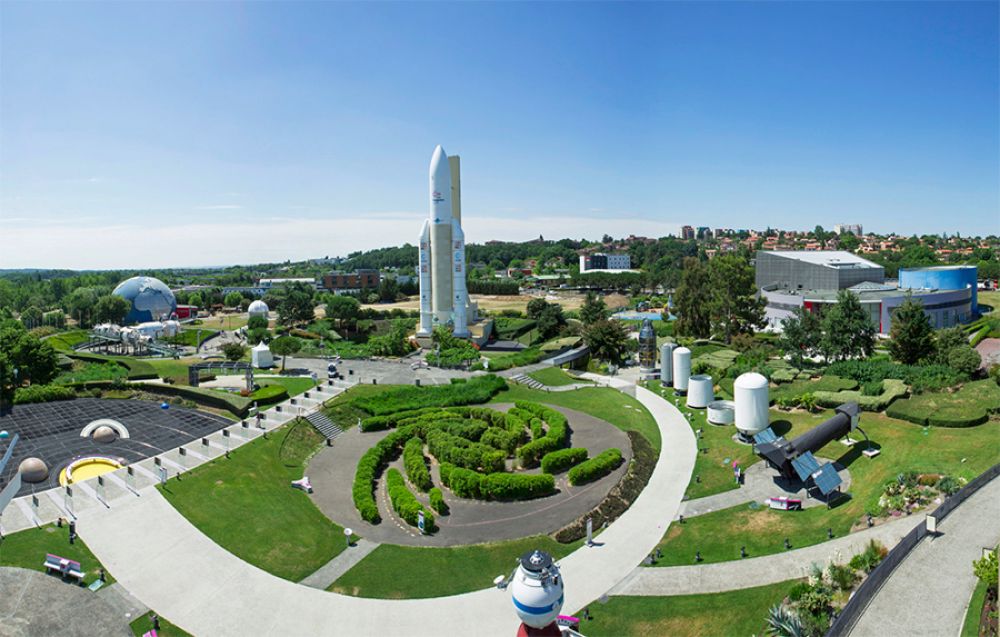
While Toulouse’s reputation as the hub of European aviation—thanks in large part to Airbus—is well known, the city’s fascination with flight extends far beyond our skies. Since opening its doors in 1997, Cité de l’Espace has brought the marvels of space exploration to life through full-scale models, hands-on exhibits, and immersive experiences that inspire curiosity in visitors of all ages.
The undisputed centerpiece of the museum is the towering 52-meter-high Ariane 5 rocket, a jaw-dropping structure that dominates the outdoor garden. But this isn’t just a one-hit wonder; within its grounds, Cité de l’Espace offers a rich and varied journey through time, science, and space.
Step inside and you’ll find a real piece of the Moon, brought back by the Apollo 15 mission and proudly displayed since 1998. Explore a life-size prototype of the Mir space station, complete with narrow corridors and controls placed on the ceiling—because in space, gravity is optional. Don’t miss the Stellarium planetarium, a 280-seat theatre that offers dazzling deep-space shows on a massive 600 sq m dome, all guided by a live presenter.
If You Have 1 Hour:
Prioritize the Moon rock—small in size, massive in history.
Step inside Mir to glimpse life aboard a space station.
Catch a quick show at the Stellarium.
If You Have 2 Hours:
Check out the Martian Ground where Mars rovers like Perseverance and Sojourner are demoed on a red-dust amphitheater stage.
Watch a space-themed film in the IMAX theatre—3D glasses included!
If You Have a Full Day:
Dive into the full Cité experience across all three levels of the main building.
Discover the Artemis missions and track the International Space Station in real time.
Visit a special weather exhibit where you can present your own forecast.
Test your astronaut potential in the Vega Room, a 40-minute ESA-style selection simulation (arrive early—spaces fill fast!).
The idea for Cité de l’Espace took shape in 1994, with construction beginning in 1995. It opened to the public in June 1997, inaugurated by Mayor Dominique Baudis and astronaut Claudie Haigneré. By 2000, it had welcomed over a million visitors. Today, it’s one of France’s most unique and ambitious science centers.
Occasionally, the center hosts guest appearances by real astronauts, including space legends like Chris Hadfield and Tim Peake. These talks are free with a standard entry ticket—check Cité de l’Espace’s social media to time your visit with one of these special events.
Tickets: €24.50 (adults), €18 (ages 5–18), free for under-5s. Book online to skip the queues.
Download the official app for daily show schedules and live updates.
Opening hours: Usually 10am to 7pm; check the website for specific dates.
Note: Outdoor food stalls may be closed in winter.
By public transport:
Take bus L1 or L8, then walk a short distance.
Or take Metro Line A to Jolimont, then bus 37 to the entrance.
Total journey time: ~40 minutes from the city center.
By car or taxi: Approx. 20 minutes from central Toulouse.

An immersive aerospace discovery center located on the eastern outskirts of Toulouse, Cité de l’Espace brings space exploration to life through full-size replicas, interactive exhibits, and hands-on experiences. The 52-meter Ariane 5 rocket towers over the gardens, while inside, visitors can view a real piece of moon rock from the Apollo 15 mission and step inside a prototype of the Mir space station.
Must-sees:
Moon rock exhibit (Apollo 15)
Martian Ground with rover demos
Ariane 5 rocket and Mir space station
Stellarium planetarium and IMAX shows
Artemis mission exhibit and astronaut selection simulator
Visitor tips:
Allocate a full day to see everything
Arrive early; show schedules vary daily
Tickets: €24.50 adults / €18 children (5–18) / Free for under 5s
Access: Bus L1, L8, or metro Line A to Jolimont, then bus 37
Download the official app for up-to-date schedules
Occasional free astronaut talks—watch social media for announcements
This 13th-century Dominican convent is a Southern Gothic masterpiece known for its octagonal bell tower and palm tree-shaped ceiling columns. Hidden in the city center, it offers quiet beauty and striking architecture, with stained glass that casts vivid colors across the interior in the morning light.
Must-sees:
Le Palmier des Jacobins (palm-column nave)
Relics of Saint Thomas Aquinas
Secluded cloister and garden (€5)
Chapter House and rotating exhibitions
Visitor tips:
Free general entry; cloister access €5
Open Tuesday to Sunday; closed Mondays
Arrive in the morning for best light and fewer crowds
Guided tours in English (€8) often available Fridays
Deck chairs in the cloister offer a cool, peaceful retreat
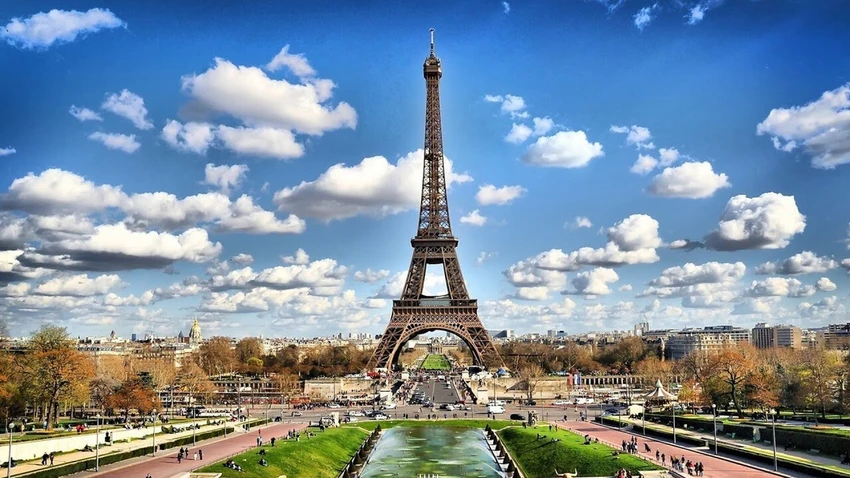
Whether you visit by day for clear skyline views or by night for the sparkle of lights, the Eiffel Tower offers a one-of-a-kind experience. With restaurants, panoramic views, and a deep history, it’s a Paris essential visited by around seven million people each year.
Built by Gustave Eiffel for the 1889 World’s Fair, the tower took two years, 300 workers, and 2.5 million rivets to complete. Originally unpopular with artists and intended for demolition in 1909, it was saved thanks to its usefulness in radiotelegraphy. Once the tallest structure on Earth, it remains a symbol of modern engineering. Today, it’s being restored to its original golden hue for the 2024 Olympics.
Highlights: Glass floor panels, discovery walkway, wind turbines
Amenities: Café, souvenir shop, 58 Tour Eiffel restaurant
Note: The most spacious level but not the best views
Highlights: Best city views, panoramic maps, lift mechanics display
Amenities: Toilets, macaron bar, Le Jules Verne (Michelin-starred restaurant)
Highlights: Views up to 60km, Eiffel’s restored “secret apartment”
Amenities: Champagne bar (open 10:15am–10:15pm)
Note: Access by lift only from the 2nd floor; closed in strong winds
Book online: Recommended for timed entry and shorter queues
Stair tickets: Only sold onsite at the south pillar (720 steps to 2nd floor)
Restaurants: Reservation includes priority lift access
Accessibility: Top floor and stairs not accessible for limited mobility
Metro: Bir Hakeim (Line 6)
RER Train: Champ de Mars–Tour Eiffel (RER C)
Best viewing spot for lights: Jardins du Trocadéro
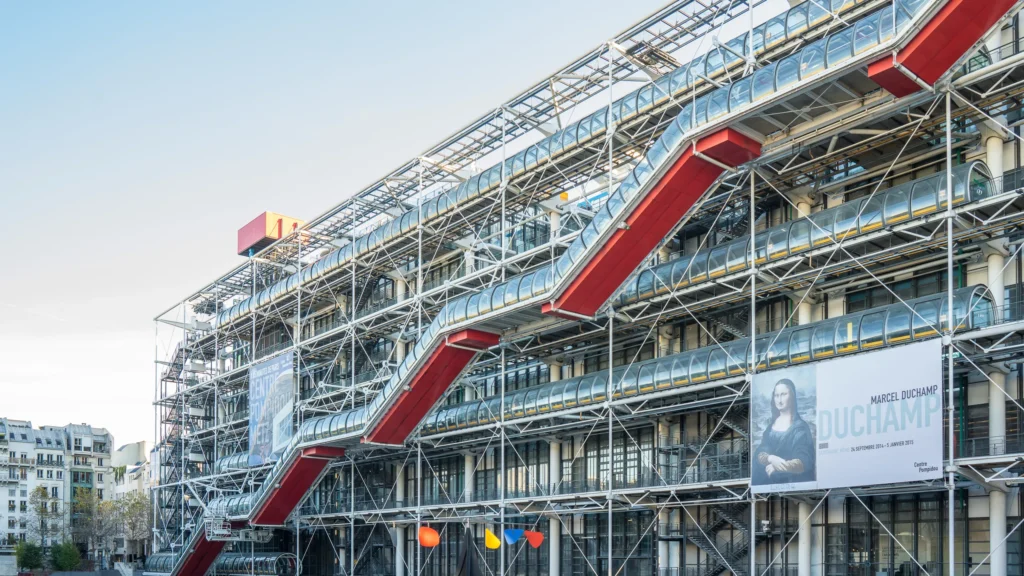
Home to Europe’s largest collection of modern and contemporary art, the Centre Pompidou has captivated visitors since its bold opening in 1977. Known for its striking “inside-out” architecture and panoramic rooftop views of Paris, the centre is not just a museum—it’s a complete cultural experience.
Location: 4th & 5th floors
Highlights: Works by Picasso, Matisse, Chagall, Kandinsky, Warhol, Pollock & Rothko
Collection: Over 100,000 pieces, rotated regularly
5th Floor: Modern art (1905–1970s)
4th Floor: Contemporary works (1990s to present)—installations, video art, sculpture, and design
6th Floor: Two rotating exhibition halls and Restaurant Georges with sweeping Paris views
Rooftop access: Included in general admission; panorama-only ticket available (€5)
Floors: 1st to 3rd
Access: Via Rue du Renard
A large open-access space for study and research
Cinemas and exhibitions on the ground floor and basement
Place Georges Pompidou: Street performers, musicians, and artists
Place Igor Stravinsky (south): Playful mechanical fountains by Jean Tinguely and Niki de Saint Phalle
Open: 11am–7pm (Wed to Mon)
Activities: Interactive exhibits and hands-on workshops (Wed, Sat, Sun)
Open: 2pm–6pm (Wed, Sat, Sun)
Features: Digital kits, visual/performing arts, artist-led sessions
Commissioned by President Georges Pompidou and designed by Renzo Piano and Richard Rogers, the centre reverses traditional architecture: structural and mechanical systems are exposed on the façade, maximizing open interior space. A renovation in 2020 refreshed its iconic look.
Closed: Tuesdays
Best time to visit: After 5pm to avoid daytime crowds
Free entry: First Sunday of each month
Audio tours: Downloadable via the official website (bring your own device)
English tours: Saturdays at 2pm, sometimes Sundays (€4.50; book online)
Wheelchair access: Step-free entry on Rue du Renard / Rue St Merri corner
Nearest Metro: Rambuteau
Tip: Buy tickets online for faster entry through security
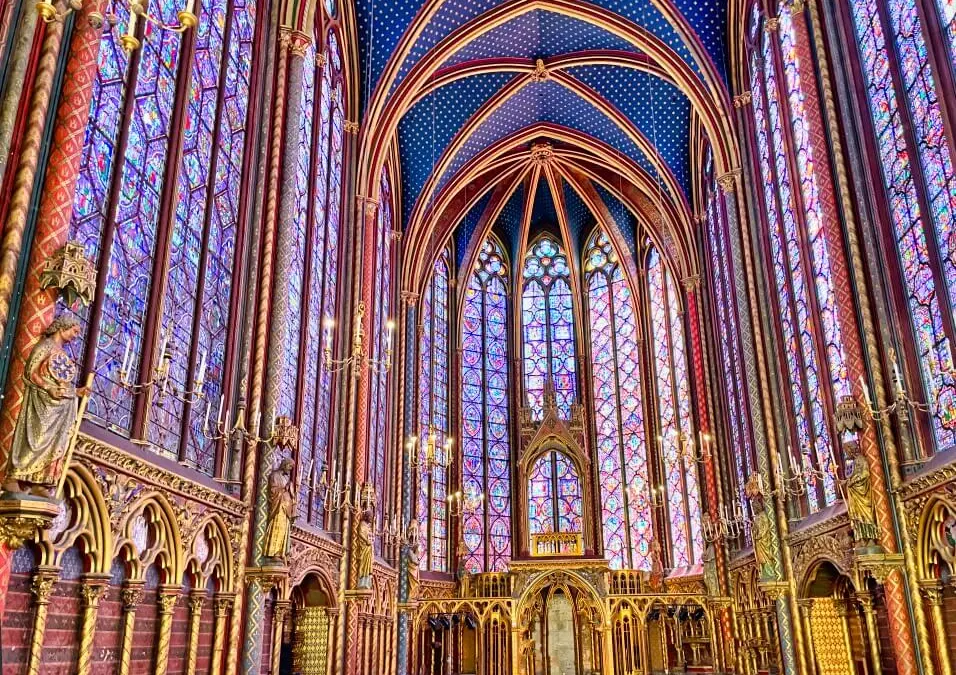
Visit Sainte-Chapelle on a sunny day to experience Paris’ oldest and most breathtaking stained glass at its most radiant. Built between 1242 and 1248 by King Louis IX to house holy relics—including the Holy Crown of Thorns—this Gothic gem is famous for its stunning stained-glass windows, sacred ambiance, and enchanting classical music concerts.
Stained Glass: 15 towering windows cover 640 sq meters, with 1113 detailed biblical scenes—70% of the original 13th-century glass remains intact. Read the windows from left to right, bottom to top for the full story.
Architecture: A masterpiece of Rayonnant Gothic architecture, Sainte-Chapelle was completed in just six years and consecrated in 1248.
Relics: Once home to the Holy Crown, now kept at the Louvre after the 2019 Notre-Dame fire.
Location: Within the Palais de Justice, Île de la Cité
Security: Airport-style security—avoid carrying pocket knives or scissors
Free Entry: First Sunday of the month (Nov–Mar)
Tickets: Buy a combination ticket with the Conciergerie next door for faster access
Guided Tours:
English: Free 1½-hour tours daily (11am–3pm)
French: Free 45-minute tours at 11am & 3pm (from the ground-floor bookshop)
Audio Guide: €3 (30 mins)
App: Download the Sainte-Chapelle Windows app for detailed viewing
Entry: Step-free access via Boulevard du Palais
Lower Chapel: Accessible via ramp
Upper Chapel: Accessed by elevator in an adjacent building
Wheelchair Users: Limit of two per floor; adapted wheelchair available; accessible toilets provided
Tip: Reserve accessibility support in advance
Don’t miss the atmospheric classical and sacred music concerts held in the chapel. Check schedules and purchase tickets via Fnac or on-site.
Notre-Dame Cathedral: Just a 10-minute walk away
Dining Tip: Nearby Place Dauphine offers charming spots like Ma Salle à Manger and Sequana, known for modern French-Senegalese cuisine

It’s not until you’re standing in the grand courtyard of the Louvre—framed by its majestic palace façades and the iconic glass pyramid—that you truly feel the essence of Paris. The Louvre isn’t just a museum; it’s a monumental tribute to human creativity spanning thousands of years.
Home to over 35,000 works of art, the Louvre is one of the most visited museums in the world. Its vast collections stretch from ancient civilizations to the dawn of modern Europe. Highlights include:
Leonardo da Vinci’s Mona Lisa
Greek sculpture such as the Venus de Milo and Winged Victory of Samothrace
Egyptian and Mesopotamian antiquities
Masterpieces by Michelangelo, Rembrandt, Vermeer, Delacroix, and more
Whether you’re an art lover or casual visitor, the Louvre offers something awe-inspiring at every turn.
The Louvre’s core mission is to showcase Western art—from the Middle Ages to 1848—as well as treasures from ancient cultures that shaped Europe’s heritage. Key collections include:
French and Italian Renaissance paintings
Dutch and Spanish masters
Crown jewels of Louis XV and royal artifacts
Islamic art galleries in the restored Cour Visconti
Originally built as a fortress by Philippe-Auguste in the 12th century, the Louvre was transformed into a royal palace in the 16th century. It became a public museum during the French Revolution in 1793 with just 2,500 artworks.
The modern “Grand Louvre” project, launched in 1989 under President François Mitterrand, greatly expanded the museum’s exhibition space—including the addition of the glass pyramid by architect I.M. Pei.
Standard Ticket: €15
Online Booking: Strongly recommended (€2 surcharge)
Entry Points:
Main: Glass pyramid (Grande Pyramide)
Alternative: Carrousel du Louvre (underground shopping centre) or Porte des Lions
Timed Entry: Required—no re-entry during the day
Audio Guide: €5 multimedia guide (highly recommended)
Free Maps & Thematic Trails: Available online; trails for children and themed topics (e.g. Louvre Masterpieces, Art of Eating)
Guided Tours: In English, departing from the Hall Napoléon
Accessibility: Wheelchair-friendly routes available
Closed: Tuesdays
Visit early in the morning or late afternoon to avoid peak crowds
Check the official website for updates on ticketing and health protocols
Use the Carrousel du Louvre entrance to bypass long security lines at the pyramid
Paris Museum Pass holders: Must still reserve a time slot online

If you only have time to visit one château in the Loire Valley, make it Chambord—the region’s most extravagant and most visited. A dazzling display of French Renaissance architecture, Chambord is famed for its double-helix staircase, grand towers, and a rooftop skyline of turrets and chimneys. With 426 rooms, 282 fireplaces, and 77 staircases, its sheer scale is staggering.
Begun in 1519 by King François I as a lavish hunting lodge, Chambord grew into one of the most ambitious architectural projects in France. Despite 30 years of construction and an enormous fortune spent, the king spent just 72 days here in total—finding the palace too cold and preferring nearby Amboise and Blois.
In 2017, a formal French-style garden was added, enhancing the château’s majestic setting.
Introductory Film: Multilingual subtitles, shown inside the main entrance
Ground Floor: 18th-century kitchens
First Floor: Lightly furnished royal bedchambers
Double-Helix Staircase: Possibly designed by Leonardo da Vinci
Rooftop: A forest of spires, domes, and towers with sweeping views of the estate
Tickets: Available online or on-site; valid until year-end
Histopad Tablet (€5): Augmented reality guide (12 languages, adult and kid versions with a treasure hunt)
Guided Tours: Check at the counter (July–Sept)
Shows (Spring–Autumn):
45-minute equestrian show with period costumes
Birds of prey demonstration
Dining: Seasonal cafés and a year-round indoor café
Dress Warmly in Winter: The château remains chilly inside
By Car: 16 km east of Blois; parking on-site
By Shuttle: Runs between Blois and Chambord
Nearby Towns:
28 km from Orléans
18 km from Cheverny
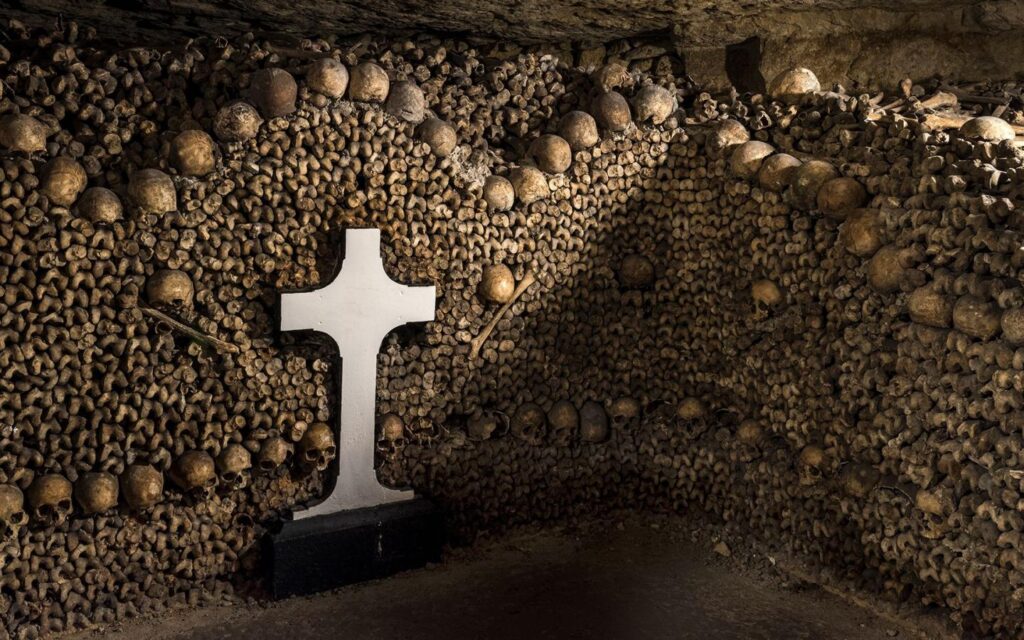
Beneath the bustling streets of Paris lies a chilling and fascinating world—the Catacombs, a vast network of subterranean tunnels housing the bones of millions of Parisians. Born from a practical solution to overcrowded cemeteries in the late 18th century, this ossuary is now one of the city’s most intriguing and eerie attractions.
In the late 1700s, Paris’s cemeteries posed serious health risks, prompting officials to relocate remains from sites like the Saints-Innocents cemetery to an abandoned quarry outside the city. Between 1785 and 1787, the bones were transferred underground, initially piled haphazardly. By 1809, decorative arrangements transformed the site into a macabre yet solemn memorial, officially opening to the public in 1810.
The Catacombs specifically refer to this ossuary section, but the underground tunnels of Paris extend far beyond and have a storied history—serving as clandestine meeting spots for the WWII Resistance and attracting modern-day urban explorers.
Visitors explore about 1.5 km (1 mile) of underground passageways during a roughly one-hour tour. Entry is via the spacious 2018 entrance on avenue du Colonel Rol-Tanguy. You descend 131 spiral steps into the ossuary, walking among walls meticulously lined with millions of skulls and bones. The exit leads up 112 steps at 21bis avenue René Coty, passing through a stark, all-white ‘transition space’ that houses a gift shop.
Physical requirements: The path is uneven and can be slippery. Wear sturdy shoes.
Not suitable: For young children, people with claustrophobia, or wheelchair users (no ramps or lifts).
Temperature: Constantly cool at about 14°C (57°F).
Crowds: Maximum 200 visitors inside at once. Long queues common—if wait times exceed 20 minutes, you may receive a timed return ticket for later that day.
Last admission: 7:30 PM.
Booking: Online tickets cost more but include an audioguide and guaranteed entry timeslot. Walk-in visitors may queue without guarantees.
Guided tours: English tours last 90 minutes and run Thursdays at 1 PM.
Security: Bag searches prevent removal of bones or souvenirs.
Dare to descend and uncover the shadows beneath Paris—this is an unforgettable journey through the city’s dark past.
WhatsApp us